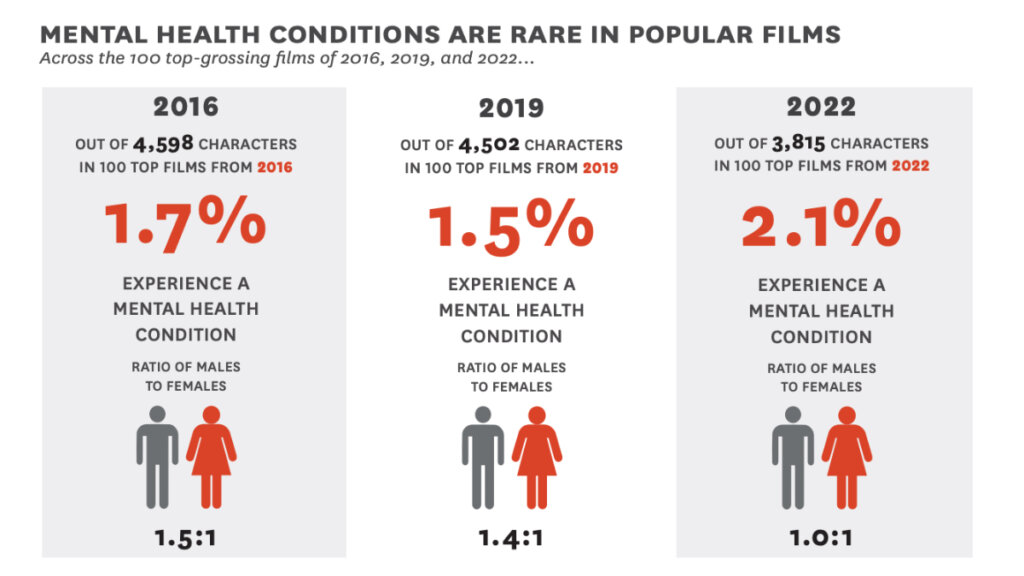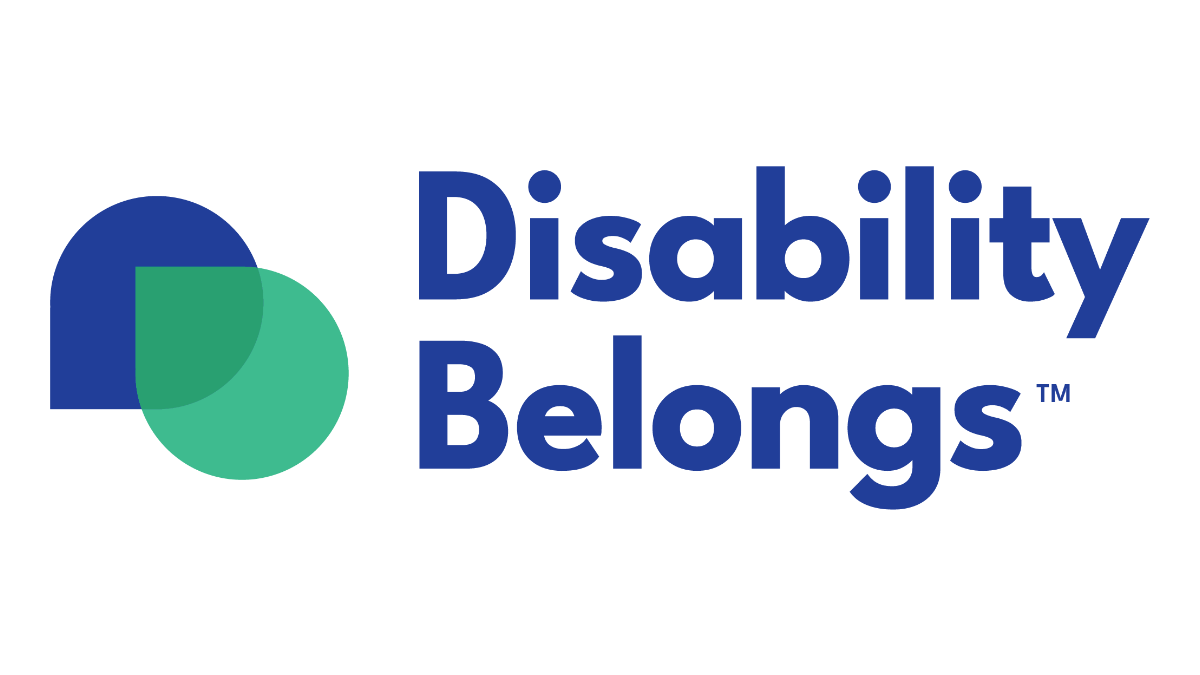While more than 20% of adults in the U.S. live with a mental health condition, a new study has found that mental health conditions continue to be rare in popular films. This study, the third of a series since 2016, was conducted by the USC Annenberg Inclusion Initiative in partnership with the American Foundation for Suicide Prevention.
 Just 2.1% of characters in the top 100 films in 2022 experience a mental health condition including addiction (28 characters), anxiety/PTSD (24), mood disorder (21), suicide (14), significant disturbance in thinking (8), and obsessive-compulsive disorder (2). Some characters presented with more than one mental health condition. This representation shows little growth since 2019 (1.5%) and 2016 (1.7%).
Just 2.1% of characters in the top 100 films in 2022 experience a mental health condition including addiction (28 characters), anxiety/PTSD (24), mood disorder (21), suicide (14), significant disturbance in thinking (8), and obsessive-compulsive disorder (2). Some characters presented with more than one mental health condition. This representation shows little growth since 2019 (1.5%) and 2016 (1.7%).
“Our work has demonstrated that change has occurred in entertainment across a variety of indicators,” Associate Professor of Communications Stacy L. Smith said. “Yet when it comes to mental health conditions– which are reported by a significant portion of the population– there has been no improvement over time. Entertainment can play a role in shaping perceptions of mental health conditions, but the absence of these portrayals communicates that mental health conditions are invisible as are those who live with them. This must change.”
Stigmatization of Mental Health in Film Leads to Real-Life Negative Consequences
The representation that does exist for people with mental health conditions is overwhelmingly in characters that are white, violent, and disparaged against. This representation has resulted in people with mental health conditions being erased, dehumanized, and stereotyped on screen.
For example, 72% of film characters with a mental health condition in 2022 were perpetrators of violence, up from 46% in 2016 and 63% in 2019. This leads individuals to believe that those with mental health conditions are more likely to be violent.
78% of characters with a mental health condition in 2022 were shown in context with disparagement, including demeaning, disdain, or belittling. Of those, 47% were disparaged specifically about or relating to their mental health.
In addition, 77% were shown as targets of violent attacks. Dehumanizing language, including “crazy,” “freak,” “psycho,” “nuts,” and “hysterical” is normalized in film. As the USC report states, “exposure to dehumanizing language can increase risk of learning and/or enacting aggression.”
“Film appears to have little value for the lives of characters with mental health conditions,” Smith said. “From violence to death, popular films draw on outdated stereotypes in ways that may have a negative impact on the attitudes, perceptions, and beliefs of audience members when it comes to mental health.”
Intersectional Representation is Lacking
While the percentage of mental health representation in film has not increased much since 2016, the gender representation has become better. In 2016, 60% of the 87 characters with mental health conditions were male. In 2022, 51% of the 83 characters were male and 49% were female. However, no characters were coded as non-binary.
Just 24% of characters with mental health conditions were from an underrepresented racial or ethnic group. Not a single transgender character was shown with a mental health condition in the films from 2016, 2019, or 2022. In 2022, just 7 LGB characters were shown with a mental health condition. Across 300 top films from 2016 to 2022, only 4 of 9 LGBTQ+ characters with a mental health condition were from an underrepresented racial or ethnic background. All of these appeared in 2022.
When looking at age, just 6% of characters (5 in total) with a mental health condition in the top 100 films were teens. However, according to the CDC, 29% of U.S. teens experienced poor mental health in 2021.
While mental health is classified as a disability under the Americans with Disabilities Act, there is an overlap between individuals with mental health conditions and other disabilities. However, this is not represented in film enough. In 2022, just 18% of characters were depicted with both a mental health condition and another disability.
Finding Solutions
To destigmatize mental health, the first step is to educate people. Filmmakers have the power to make a big difference in this area. The Annenberg Inclusion Initiative recommends several ways filmmakers can change the current inaccurate and harmful representation found in films, including:
- Story Development: Use the Mental Health Media Guide, of which RespectAbility was a partner in its creation, to identify resources and experts, write inclusive characters with interconnected lives, consider context, and avoid depictions that research has shown can be dangerous for some viewers.
- Production & Filming: Align on why the story matters, identify critical story elements to retain, understand how visual depictions relate to mental health, and consider having a wellness coordinator on set.
- Protect Cast & Crew: Provide mental health support, promote interdependence among the team, set standards for language usage and humor, and bring experts to set.
- Marketing & Exhibition: Put key information in press kit, determine whether to refer to resources, give talking points about mental health, and build an inclusive press experience.







